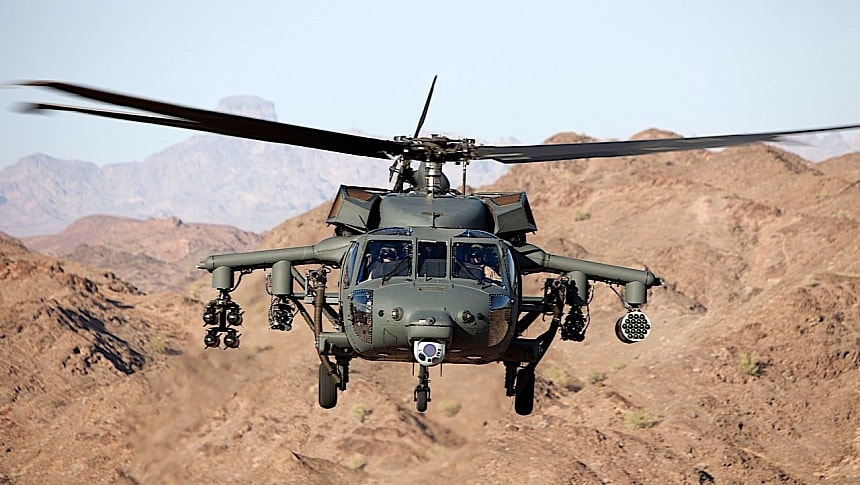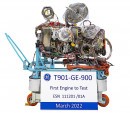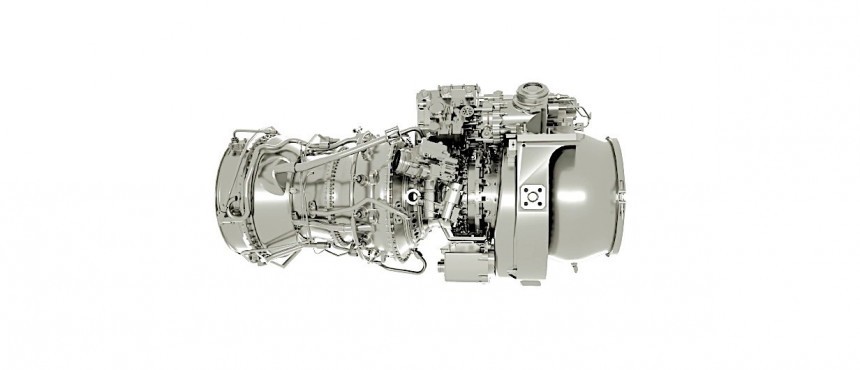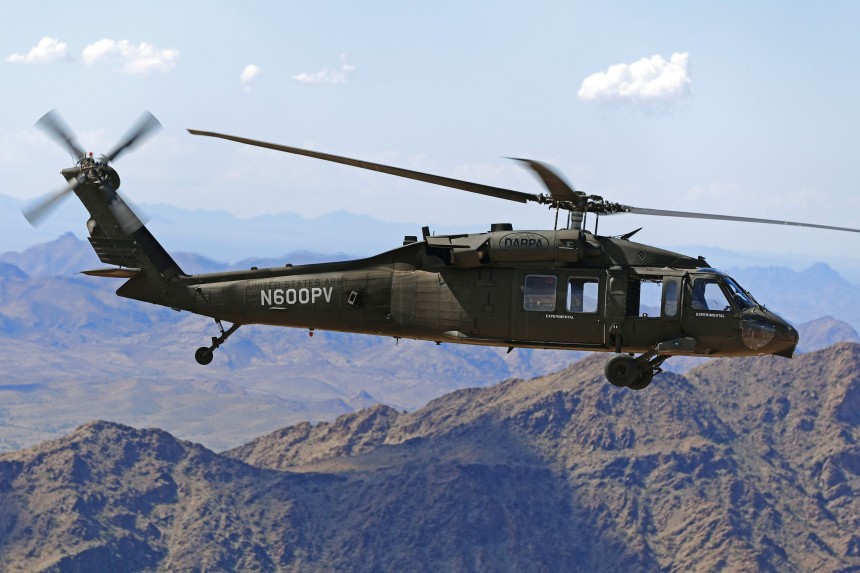A little more than a year ago, in January 2023, Lockheed Martin's Sikorsky announced it had produced the 5,000th Black Hawk helicopter, a feat that only went to attest to the aircraft's reliability. After all, we're talking about a platform that this year celebrates half a century since it first flight, and it's still very much alive and kicking.
The Black Hawk took to the sky for the first time in 1974 as a utility military helicopter that can be transformed to serve a variety of purposes. By trade a twin-engine machine that spins four blades, it entered service with the U.S. Army in 1979, and it has rapidly become the Army's favorite aerial workhorse. Or, in official terms, the "foundational tactical air assault and utility aircraft of choice."
In the many years it has been around, the Black Hawk has turned from a single helicopter into an entire family of them. In use in no less than 35 countries around the world, (the U.S. included), it is actively being deployed for anything from troop carrier and aerial fighting platform to medical evacuation vehicle and airborne firefighting truck.
America is, naturally, the largest Black Hawk operator. It flies about 2,000 of the entire batch, and because of that it kind of feels the pressure of the aging bird more than anyone else. That's why the military kicked off, not long ago, a modernization program aimed at upgrading the helo and keeping it relevant.
The changes to be made in the coming years include updates to several systems, but most importantly they target the Black Hawks' engines. The program will only cover about 1,200 of the helicopters currently in use, but it's meant to make the Black Hawk a platform capable of staying in service until well into the 2070s.
For all intents and purposes, that would make the helicopter the world's second aircraft to still be in operation a century after it was originally made. The first one is the Boeing B-52 Stratofortress, which will get to reach 100 years old in the 2050s thanks to the extensive upgrades being made to it.
As said, perhaps the most important upgrade to be made to the Black Hawk is the fitting of new engines. In their present configuration the Black Hawks, no matter what they are used for, are powered by a pair of engines made by General Electric.
The powerplant is called T700 and depending in application it has a power rating ranging between 1,768 and 1,915 horsepower. That makes it a perfectly fine piece of hardware, but the Army needs more power and better fuel consumption if it is to keep flying these things.
The new engines that will go into the Black Hawks, which coincidentally are the same that will power the revamped versions of the AH-64 Apache, have been selected back in 2019 and are part of a family called T901-GE-900, made by the same General Electric.
The company has been at it testing the powerplants for their use in the Black Hawk for roughly two years now, going for no less than 1,500 hours of full-scale ground testing and 5,000 hours of testing for full engine qualification. That's because the powerplants are supposed to bring significant improvements compared to the ones they are meant to replace.
The T901 should develop at least 50 percent more power than the T700 (that's a grand total of around 3,000 horsepower), while at the same time being 25 percent better at saving fuel – and this should translate into an increased range for the Black Hawk. The way it was made allows it to be installed on the existing mountings, meaning it will not require any kind of re-engineering.
It's been a while since we've had an update on the matter, but last week, Sikorsky announced it has reached an important milestone in the modernization program for the Black Hawk: two T901 engines are in the process of being installed on a helicopter, so ground runs and flight tests could begin.
The company is also preparing a second Black Hawk for the same task, hoping to accelerate the test program.
Technically speaking, Sikorsky knows a thing or two about how the engine behaves as it has already been installed and flown in on the Raider prototype. That's an aircraft currently competing in the U.S. Army's Future Attack Reconnaissance Aircraft (FARA) program (its rival, the Bell 360 Invictus, will be powered by the same engine), and the data gained with it will be used to inform the Black Hawk integration as well.
It's not clear when work on upgrading the engines on the entire fleet of Black Hawks will be completed. The FARA program is set to choose its winner in 2028, so it's likely the veteran helicopter, and possibly even the Apache, will get to actively use the T901 for operational purposes before that.
In the many years it has been around, the Black Hawk has turned from a single helicopter into an entire family of them. In use in no less than 35 countries around the world, (the U.S. included), it is actively being deployed for anything from troop carrier and aerial fighting platform to medical evacuation vehicle and airborne firefighting truck.
America is, naturally, the largest Black Hawk operator. It flies about 2,000 of the entire batch, and because of that it kind of feels the pressure of the aging bird more than anyone else. That's why the military kicked off, not long ago, a modernization program aimed at upgrading the helo and keeping it relevant.
The changes to be made in the coming years include updates to several systems, but most importantly they target the Black Hawks' engines. The program will only cover about 1,200 of the helicopters currently in use, but it's meant to make the Black Hawk a platform capable of staying in service until well into the 2070s.
For all intents and purposes, that would make the helicopter the world's second aircraft to still be in operation a century after it was originally made. The first one is the Boeing B-52 Stratofortress, which will get to reach 100 years old in the 2050s thanks to the extensive upgrades being made to it.
The powerplant is called T700 and depending in application it has a power rating ranging between 1,768 and 1,915 horsepower. That makes it a perfectly fine piece of hardware, but the Army needs more power and better fuel consumption if it is to keep flying these things.
The new engines that will go into the Black Hawks, which coincidentally are the same that will power the revamped versions of the AH-64 Apache, have been selected back in 2019 and are part of a family called T901-GE-900, made by the same General Electric.
The company has been at it testing the powerplants for their use in the Black Hawk for roughly two years now, going for no less than 1,500 hours of full-scale ground testing and 5,000 hours of testing for full engine qualification. That's because the powerplants are supposed to bring significant improvements compared to the ones they are meant to replace.
The T901 should develop at least 50 percent more power than the T700 (that's a grand total of around 3,000 horsepower), while at the same time being 25 percent better at saving fuel – and this should translate into an increased range for the Black Hawk. The way it was made allows it to be installed on the existing mountings, meaning it will not require any kind of re-engineering.
It's been a while since we've had an update on the matter, but last week, Sikorsky announced it has reached an important milestone in the modernization program for the Black Hawk: two T901 engines are in the process of being installed on a helicopter, so ground runs and flight tests could begin.
Technically speaking, Sikorsky knows a thing or two about how the engine behaves as it has already been installed and flown in on the Raider prototype. That's an aircraft currently competing in the U.S. Army's Future Attack Reconnaissance Aircraft (FARA) program (its rival, the Bell 360 Invictus, will be powered by the same engine), and the data gained with it will be used to inform the Black Hawk integration as well.
It's not clear when work on upgrading the engines on the entire fleet of Black Hawks will be completed. The FARA program is set to choose its winner in 2028, so it's likely the veteran helicopter, and possibly even the Apache, will get to actively use the T901 for operational purposes before that.



















